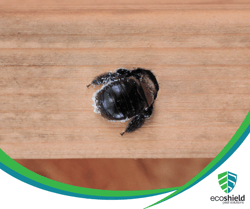 If you've ever spotted large, black and yellow bees buzzing around your property, you might have encountered carpenter bees. These solitary insects are often mistaken for their docile look-alikes, bumblebees, but they have distinct behaviors and characteristics. Today, we'll explore whether carpenter bees pose a threat to homeowners and their properties, shedding light on their habits, potential dangers, and how to deal with them effectively. Understanding these fascinating creatures can help homeowners make informed decisions about managing them without unnecessary fear or harm.
If you've ever spotted large, black and yellow bees buzzing around your property, you might have encountered carpenter bees. These solitary insects are often mistaken for their docile look-alikes, bumblebees, but they have distinct behaviors and characteristics. Today, we'll explore whether carpenter bees pose a threat to homeowners and their properties, shedding light on their habits, potential dangers, and how to deal with them effectively. Understanding these fascinating creatures can help homeowners make informed decisions about managing them without unnecessary fear or harm.
How can I identify carpenter bees?
Identifying carpenter bees is crucial for homeowners looking to understand and manage them effectively. One of the most distinctive features of carpenter bees is their size and appearance. They are large bees, typically ranging from about half an inch to an inch in length, with shiny black abdomens and often a yellow or white patch of hair on their thorax. This coloration may lead some to mistake them for bumblebees; however, carpenter bees lack the fuzzy appearance characteristic of bumblebees. Additionally, carpenter bees have a noticeably shiny, hairless abdomen, which sets them apart from bumblebees.
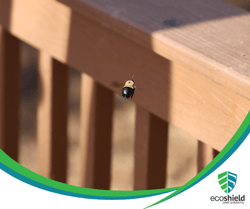 Another key characteristic of carpenter bees is their behavior. Unlike social bees such as honeybees and bumblebees, carpenter bees are solitary insects. They do not live in colonies or nests but instead construct individual galleries within wood. Homeowners may notice perfectly round holes, about half an inch in diameter, on wooden surfaces such as eaves, decks, or siding, indicating carpenter bee activity. These holes serve as entrances to the tunnels where carpenter bees lay their eggs and rear their young.
Another key characteristic of carpenter bees is their behavior. Unlike social bees such as honeybees and bumblebees, carpenter bees are solitary insects. They do not live in colonies or nests but instead construct individual galleries within wood. Homeowners may notice perfectly round holes, about half an inch in diameter, on wooden surfaces such as eaves, decks, or siding, indicating carpenter bee activity. These holes serve as entrances to the tunnels where carpenter bees lay their eggs and rear their young.
Distinguishing carpenter bees from other bees and wasps is essential for proper management. While carpenter bees are generally docile and less likely to sting unless provoked, their presence can still cause structural damage to wooden structures. Unlike honeybees, which live in hives and construct elaborate wax combs, carpenter bees are solitary and do not produce honey. Furthermore, while both carpenter bees and bumblebees can appear similar in size and coloration, bumblebees are social insects that build nests in the ground or other protected locations rather than boring into wood. Wasps, on the other hand, typically have narrower waists and more elongated bodies compared to carpenter bees, and their nests are often constructed from materials like paper or mud rather than wood. By understanding these distinctions, homeowners can accurately identify carpenter bees and implement appropriate measures for control and prevention.
Do carpenter bees have stingers?
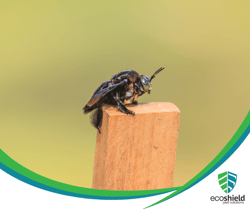 Carpenter bees, unlike their aggressive counterparts like honeybees and wasps, are generally considered gentle insects. They do possess stingers, but they are unlikely to use them against humans unless provoked or mishandled. Male carpenter bees, which are often the ones seen flying around, do not have stingers at all. Instead, it's the female carpenter bees that have stingers, but they are not typically aggressive and will only sting if they feel threatened or cornered.
Carpenter bees, unlike their aggressive counterparts like honeybees and wasps, are generally considered gentle insects. They do possess stingers, but they are unlikely to use them against humans unless provoked or mishandled. Male carpenter bees, which are often the ones seen flying around, do not have stingers at all. Instead, it's the female carpenter bees that have stingers, but they are not typically aggressive and will only sting if they feel threatened or cornered.
When a carpenter bee does sting, it's usually a defensive response rather than an aggressive one. Their stings are relatively mild compared to other stinging insects and are not considered dangerous to most people. However, individuals who are allergic to bee stings should exercise caution and have appropriate medical supplies on hand in case of a reaction.
One important distinction between carpenter bees and other stinging insects like honeybees is that carpenter bees can sting multiple times. Honeybees, once they've stung, typically leave behind their stinger along with a venom sac, which ultimately leads to their death. However, carpenter bees can sting repeatedly without losing their stinger, making them potentially more persistent if provoked. Despite this capability, carpenter bees are still unlikely to sting humans unless provoked, and their stings are generally considered less painful than those of other bees or wasps.
Will carpenter bees hurt my pets?
Carpenter bees are generally not a significant threat to pets. These insects are primarily focused on boring into wood to create nests for their eggs and do not typically seek confrontation with animals. Unlike some other stinging insects, like wasps or hornets, carpenter bees are not known for aggressive behavior toward humans or animals.
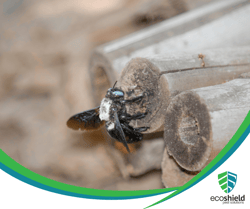 Pets, particularly dogs and cats, may occasionally encounter carpenter bees while exploring outdoor areas where these insects are active. However, carpenter bees are not likely to sting unless they feel threatened or are mishandled. Typically, pets may show curiosity toward carpenter bees, but unless the bees feel cornered or harassed, they are unlikely to sting.
Pets, particularly dogs and cats, may occasionally encounter carpenter bees while exploring outdoor areas where these insects are active. However, carpenter bees are not likely to sting unless they feel threatened or are mishandled. Typically, pets may show curiosity toward carpenter bees, but unless the bees feel cornered or harassed, they are unlikely to sting.
Even if a pet were to be stung by a carpenter bee, the effects would be generally mild. The sting of a carpenter bee is typically less painful and less venomous than stings from other insects like bees or wasps. Unless a pet has a specific allergy to bee stings, the reaction is usually localized pain and swelling at the site of the sting, which may resolve on its own without medical intervention.
That said, it's always a good idea to monitor pets when they are outdoors, especially if there is known carpenter bee activity in the area. Additionally, if a pet exhibits signs of distress or allergic reaction after being stung by any insect, it's essential to seek veterinary care promptly. Overall, while carpenter bees may pose a minor annoyance to pets through their presence, they are unlikely to cause significant harm under normal circumstances.
If carpenter bees aren’t dangerous, why are they a problem for homeowners?
While carpenter bees are not inherently dangerous to humans or pets, they can still pose significant issues for homeowners due to their nesting habits. One of the primary concerns with carpenter bees is their propensity to bore into wood to create galleries for nesting. Over time, this behavior can lead to structural damage to wooden structures such as decks, eaves, siding, and outdoor furniture.
 The holes that carpenter bees create to access their nests can weaken the integrity of wooden surfaces, potentially causing them to deteriorate and become unsightly. Additionally, these holes provide entry points for moisture and other pests, exacerbating the risk of further damage to the wood. In severe cases, extensive carpenter bee activity can compromise the structural stability of wooden components, leading to costly repairs or replacements.
The holes that carpenter bees create to access their nests can weaken the integrity of wooden surfaces, potentially causing them to deteriorate and become unsightly. Additionally, these holes provide entry points for moisture and other pests, exacerbating the risk of further damage to the wood. In severe cases, extensive carpenter bee activity can compromise the structural stability of wooden components, leading to costly repairs or replacements.
Furthermore, while carpenter bees are not aggressive insects, their presence near homes can still cause anxiety and discomfort for homeowners. Large numbers of carpenter bees buzzing around outdoor living spaces can deter homeowners and their guests from enjoying outdoor activities. Additionally, the accumulation of carpenter bee excrement, known as frass, around nesting sites can create unsanitary conditions and contribute to aesthetic issues.
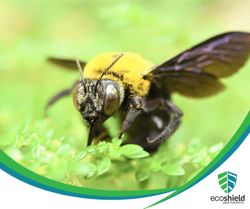 Overall, while carpenter bees may not pose a direct threat to human or pet safety, their nesting habits and associated damage can still make them a significant problem for homeowners. Implementing effective management strategies to control carpenter bee populations and protect wooden structures is essential for maintaining the integrity and aesthetics of the home environment.
Overall, while carpenter bees may not pose a direct threat to human or pet safety, their nesting habits and associated damage can still make them a significant problem for homeowners. Implementing effective management strategies to control carpenter bee populations and protect wooden structures is essential for maintaining the integrity and aesthetics of the home environment.
What should I do if I notice carpenter bees in or around my home?
If carpenter bees are damaging the wood on your home, deck, outdoor shed, or fence, don't delay. The longer carpenter bees are present, the more likely they are to reproduce and further infest your home and other structures. Call EcoShield at the first indication of carpenter bees and prevent costly remediation from late-stage infestation. We have the expert knowledge and tools to get rid of your carpenter bee infestation and ensure they don’t return! Give us a call today or fill out the form on this page for your free, no-obligation quote.